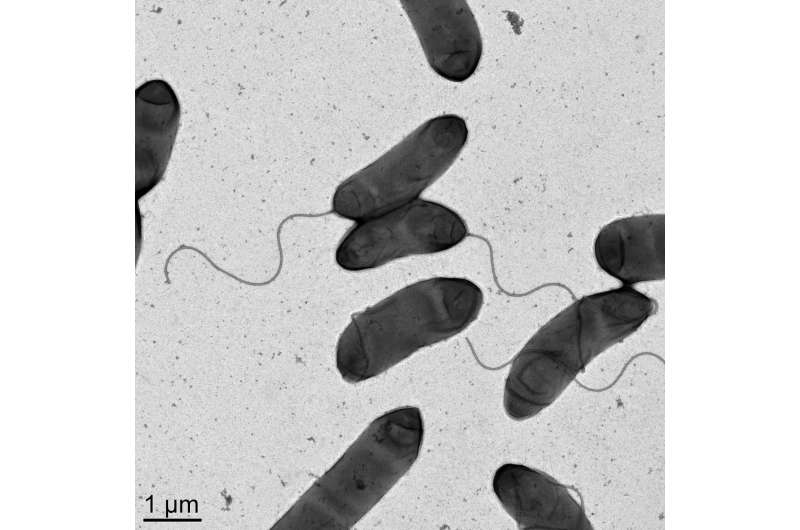An unusual form of antibiotic resistance in pandemic cholera

Cholera is a devastating disease for millions worldwide, primarily in developing countries, and the dominant type of cholera today is naturally resistant to one type of antibiotic usually used as a treatment of last resort.
Researchers at the University of Georgia have now shown that the enzyme that makes the El Tor family of V. cholerae resistant to those antibiotics has a different mechanism of action from any comparable proteins observed in bacteria so far. Understanding that mechanism better equips researchers to overcome the challenge it presents in a world with increasing antibiotic resistance. The results of this research are published in the Dec. 22 issue of the Journal of Biological Chemistry.
Cationic antimicrobial peptides, or CAMPs, are naturally produced by bacteria and by animals' innate immune systems and are also synthesized for use as last-line drugs. Cholera strains achieve resistance to CAMPs by chemically disguising the bacterium's cell wall, preventing CAMPs from binding, disrupting the wall and killing the bacterium. M. Stephen Trent's research team in Georgia previously had shown that a group of three proteins carried out this modification and elucidated the functions of two of the proteins. The team reported the role of the third protein - the missing piece in understanding CAMP resistance - in the new paper.
Former graduate student Jeremy Henderson led a research project that showed that this enzyme, AlmG, attaches glycine, the smallest of the amino acids, to lipid A, one of the components of the outer membrane of the bacterial cell. This modification changes the charge of the lipid A molecules, preventing CAMPs from binding.
Lipid A modification is a defense mechanism observed in other bacteria, but detailed biochemical characterization of AlmG showed that the way this process occurred in cholera was unique.
"It became apparent over the course of our work that how [this enzyme] improves shield functionality is quite different than would be expected based on what we know about groups of enzymes that look similar," Henderson said.
AlmG is structured differently from other lipid A-modifying enzymes, with a different active site responsible for carrying out the modification. In addition, AlmG can add either one or two glycines to the same lipid A molecule, which has also not been observed in other bacteria. "It just opens up the door for this operating with a completely different mechanism than what's been described in the literature for related proteins," Henderson said.
Genes encoding determinants of antibiotic resistance can spread between different species of bacteria, so the unique mechanism of CAMP drug resistance in V. cholerae is of potential concern if it jumps to bacteria already resistant to first-line drugs. "The level of protection conferred by this particular modification in Vibrio cholerae puts it in a league of its own," Henderson said.
More information: Jeremy C. Henderson et al, AlmG, responsible for polymyxin resistance in pandemic Vibrio cholerae, is a glycyltransferase distantly related to lipid A late acyltransferases, Journal of Biological Chemistry (2017). DOI: 10.1074/jbc.RA117.000131
Journal information: Journal of Biological Chemistry



















